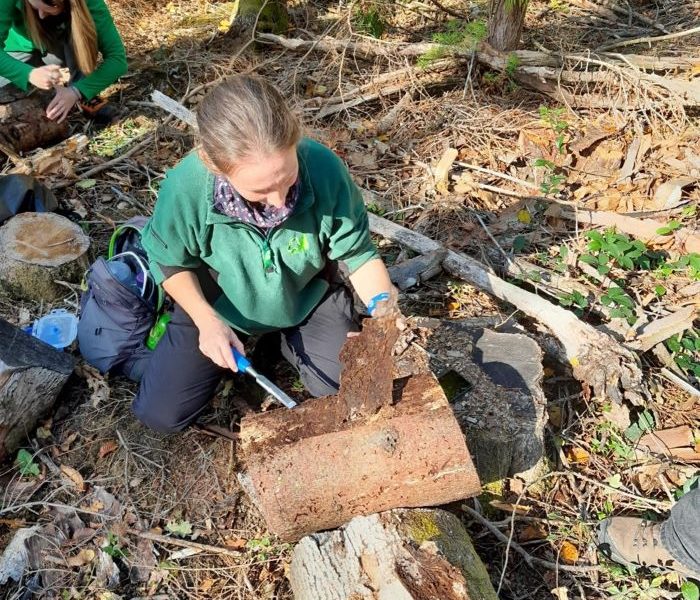We use some essential cookies to make this website work.
We’d like to set additional cookies to understand how you use forestresearch.gov.uk, remember your settings and improve our services.
We also use cookies set by other sites to help us deliver content from their services.

This document describes and reports on the first year of activities undertaken for the Welsh Plant Health Surveillance Network (WPHSN), a ground-breaking Welsh Government funded project to monitor native and invasive pests and pathogens that may pose a threat to health of plants and trees across Wales.
The disease Dothistroma needle blight (DNB), caused by pathogen Dothistroma septosporum, decreases tree resilience, causes significant timber losses, sometimes mortality, and has led to large-scale species change on the Public Forest Estate across Britain. This research aims to determine whether genetically distinct populations of the foliar pine pathogen, D. septosporum...
Rhododendron ponticum is an evergreen shrub which forms dense thickets up to 5 metres in height. The large purple blooms appear in spring and are an attractive sight which has become commonplace especially on forested slopes in the west of the British Isles. Foresters are familiar with it as a...
This Leaflet is a guide to the identification of decays in conifers for both foresters and arboriculturists.
Oak trees in Britain have long suffered from dieback and decline disorders, but a disease called acute oak decline has been causing particular concern since the first few years of the 21st century. A typical symptom of the disease is dark, sticky fluid bleeding from small cracks in the bark...
The great spruce bark beetle is found in forests throughout continental Europe. It damages spruce trees by tunnelling into the bark of the living trees to lay its eggs under the bark. The developing larvae feed on the inner woody layers, which weakens, and in some cases may kill, the...
The oak processionary moth is a serious forestry pest that is capable of causing complete defoliation of oak trees. Its caterpillars are also a hazard to health. Breeding populations of the moth were discovered for the first time in the UK in London in 2006 and these initial infestations have...
The pine weevil Hylobius abietis is a common cause of mortality in young conifers used to restock forest sites after clearfelling. This Practice Note looks at minimising the use of insecticides for the control of pine weevils by adopting an Integrated Pest Management (IPM) approach.
Invasive rhododendron presents a unique problem to the managers of any habitats it colonises. If left untreated, this aggressive weed can rapidly occupy the entire understorey of a range of woodland types, open spaces within woodlands and heathland habitats. This Practice Guide provides guidance on managing and controlling rhododendron in...
A list of all literature available (updated to December 2015) about Dothistroma in alphabetical order (A to C)
During the summer of 1987 a survey of dieback in non-woodland ash trees was undertaken in Great Britain. After excluding certain areas due to their known low ash population, two hundred 10 km squares were visited and detailed data collected on the condition of ash in a plot selected within...
The great European spruce bark beetle (Dendroctonus micans) was first identified as a breeding species in Britain in 1982. This insect’s distribution, pest status, biology, life cycle and control methods are described. Although its present population is limited to Wales, the English West Midlands and Lancashire, it is well established....
Cookies are files saved on your phone, tablet or computer when you visit a website.
We use cookies to store information about how you use the dwi.gov.uk website, such as the pages you visit.
Find out more about cookies on forestresearch.gov.uk
We use 3 types of cookie. You can choose which cookies you're happy for us to use.
These essential cookies do things like remember your progress through a form. They always need to be on.
We use Google Analytics to measure how you use the website so we can improve it based on user needs. Google Analytics sets cookies that store anonymised information about: how you got to the site the pages you visit on forestresearch.gov.uk and how long you spend on each page what you click on while you're visiting the site
Some forestresearch.gov.uk pages may contain content from other sites, like YouTube or Flickr, which may set their own cookies. These sites are sometimes called ‘third party’ services. This tells us how many people are seeing the content and whether it’s useful.